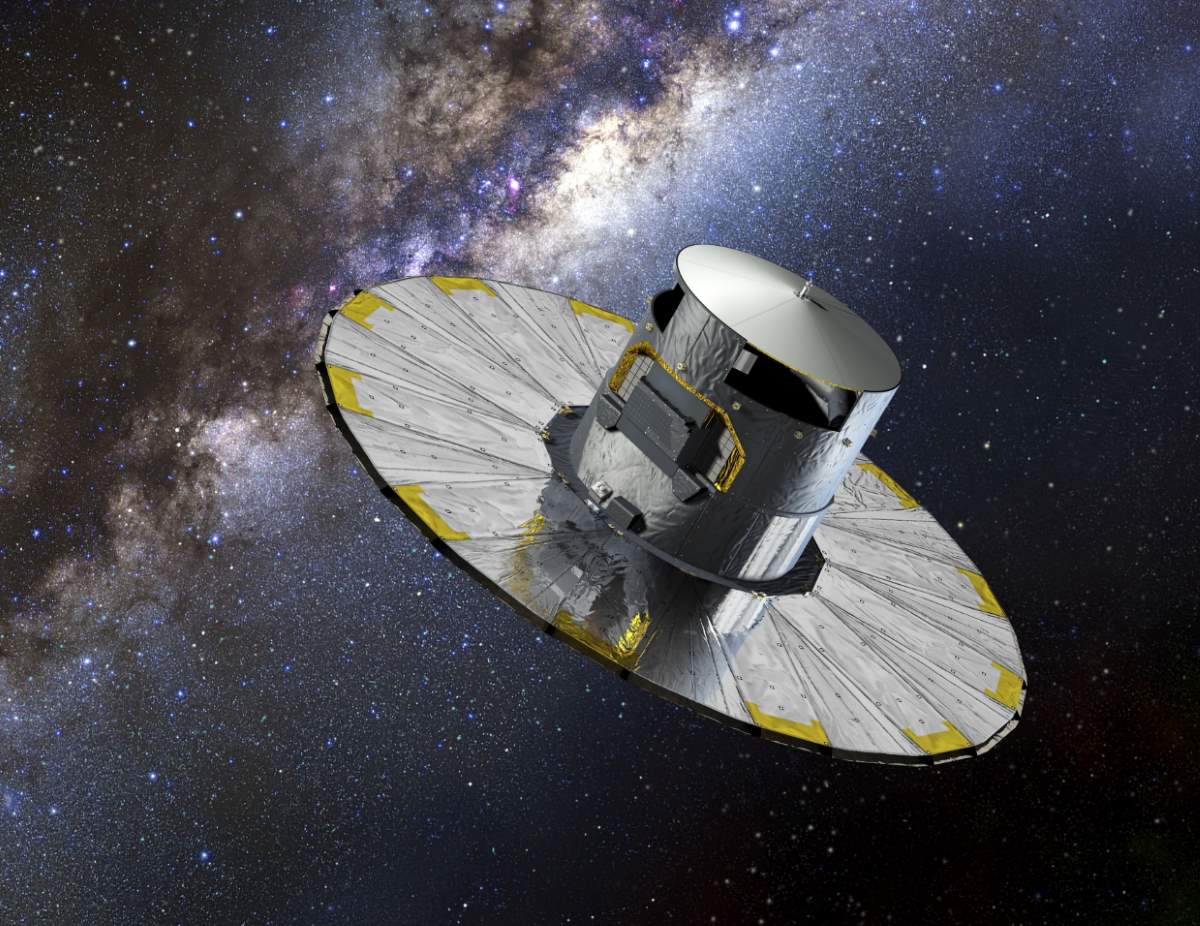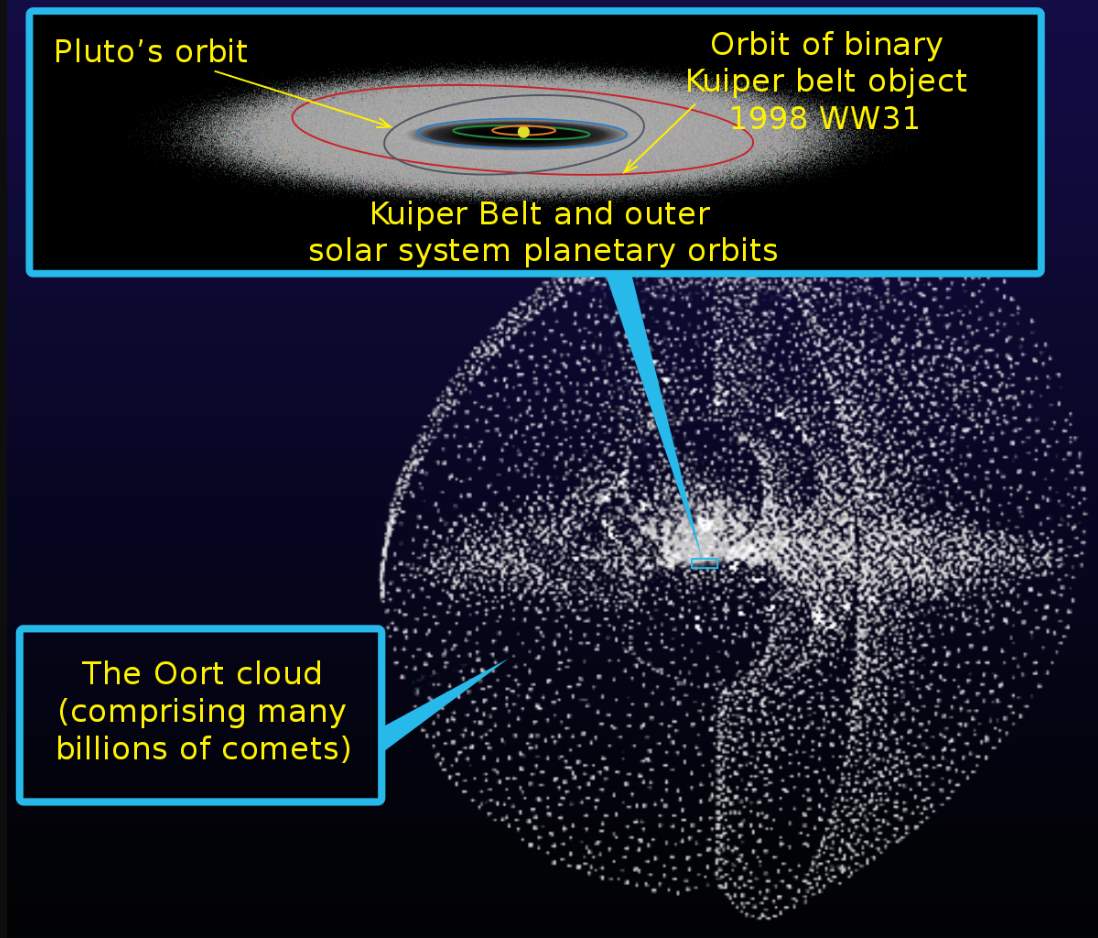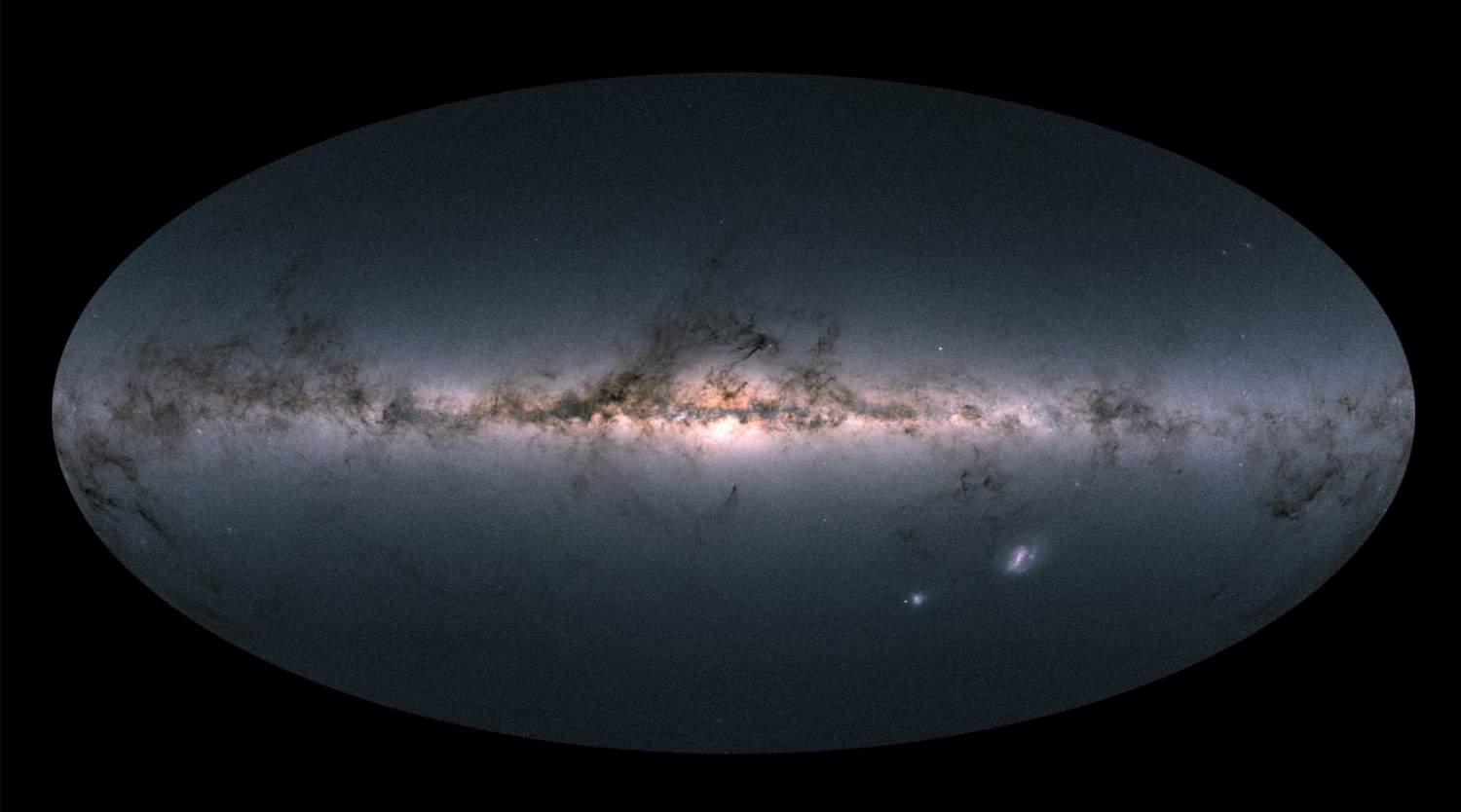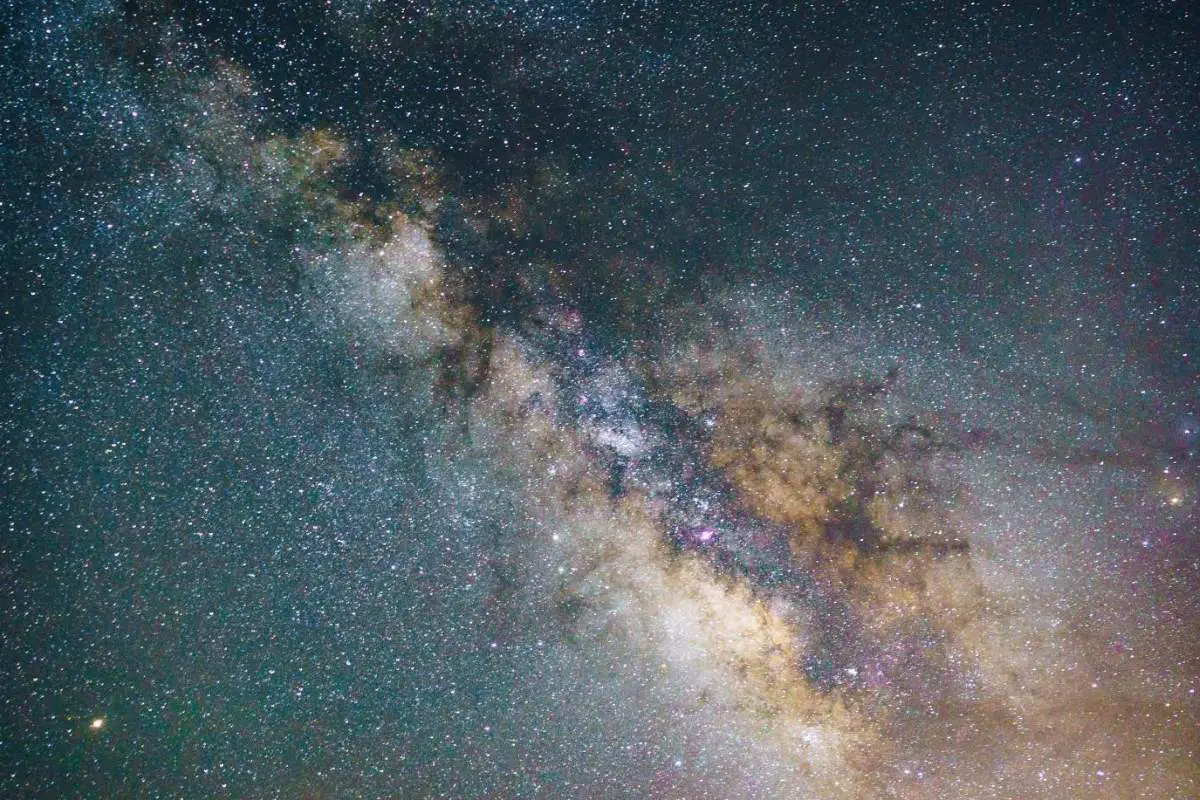In April 2018, the European Space Agency’s Gaia observatory released its second data catalog, which includes the distances to over 1.3 billion stars. In the video published by the American Museum of Natural History, the museum’s astrophysicist Jackie Faherty breaks down why this information is so revolutionary and explains how this information is helping scientists and non-scientists alike understand the universe like never before.
Some key points from the video “The Milky Way as You’ve Never Seen It Before”
- In the beautiful photo below, you cannot tell how far away the objects are. You cannot tell those two galaxies are “galaxies”. You cannot tell which one is the closest star to us. You need something else to say that kind of thing – and it’s “science”. Science will give you the answers to things, like, “how far away is a star?“

- You can’t see also the “motion” in this image. All of these stars, everything in this beautiful photo above, including the total lunar eclipse in Chile, is moving. We can learn a tremendous amount about our galaxy by looking at how far away the stars are and how they move.
- On April 25, 2018, the entire perception of the Milky Way – the entire perception of the astronomy was changed. European Space Agency’s Gaia spacecraft came out on April 25 and released 1.7 billion parallaxes – distances to stars and motion.
- Modern astrophysics was based upon 120,000. 1.7 billion is what we got on April 25.

- Faherty visualizes a subset of Gaia data – which includes a couple of hundreds of thousands of the hottest stars in the Milky Way galaxy and says: “We didn’t take that picture. The Voyager 1 is the farthest thing we ever sent and it has barely left the solar system. So we’ve never taken a picture of the galaxy. But what we’re able to do in this map, is detecting the shape of the Milky Way galaxy.”
- What do spiral arms of the Milky Way galaxy look like? Now you can use these stars as a map to try and get to that structure.
- If you know how stars are moving, and if you know how far away they are, you can look at their trajectories. We were stuck in this static view (the night view of Earth’s sky), what the galaxy looks like right now, what the nearby stars looks like right now. But once Gaia spacecraft showed up with all of these motions and distances, we can turn time on, and you can see the past and the future of the galaxy. Ar these have always been the closest stars to us? Did we ever have a flyby? Did another star come sweeping through our solar system and sending some comets and asteroids from the Kuiper belt (see notes 1) and the Oort cloud (see notes 3) towards the inner solar system? We can turn time on the Gaia data and find out.
Something wicked this way comes.
William Shakespeare. Macbeth, Act IV, Scene I.
- Faherty then turns on the time and shows the future of the solar system. According to Gaia data, in 1.2 million years, a star called Gliese 710 (see notes 4), which is about 60 percent of the mass of the Sun, is going to come within the Oort cloud. When it does that, it sends stuff into the inner solar system. (See: How Earth could die? 8 horrible ways)

- Using the Gaia data, astronomers traced back where Oumuamua, a cigar-shaped asteroid that became the first confirmed interstellar object observed traveling through our Solar System, might have come from. Before Gaia, we’ve never been able to trace back the motion of an object that came from a completely different solar system.
- Another thing that we can do with this gigantic dataset, is look for objects (i.e. stars) that move together. This is important to figure out where stars come from. How do they evolve? How do they end up interacting with each other? Do they stay together? Are these small star groups just the last bits of the core of a giant region of stars that had formed together millions or billions of years ago? This is the kind of stuff the scientists trying to figure out now. Faherty says: “It’s like forensic evidence that we didn’t have before and all of a sudden we have accessed to.”
- Gaia also gave us an unprecedented look at young stars, where the baby solar system was born. You can run time backward and forward and see how they interact with each other.
- Since 2009, Kepler Space Telescope is discovering exoplanets. Since 2009, it discovered thousands of them. Faherty shows how they all mapped properly with their distances from Gaia. She then turns time on and shows where these solar systems came from and where they are going.
- Faherty adds: “If you’re interested in playing with the data, this is not just for astronomers. This is for the public, this is for everybody. So, download our software, download the data, and play with it. It’s 1.7 billion stars, that’s too many for the astronomers. There are not enough astronomers for all of the data. So, please consider this to the invitation to the party of mapping the galaxy.”

Notes
- The Kuiper belt is a circumstellar disc in the outer Solar System, extending from the orbit of Neptune (at 30 AU, see notes 2) to approximately 50 AU from the Sun. It is similar to the asteroid belt, but is far larger – 20 times as wide and 20 to 200 times as massive. Like the asteroid belt, it consists mainly of small bodies or remnants from when the Solar System formed.
- The astronomical unit (AU) is a unit of length, roughly the distance from Earth to the Sun. Since 2012 it has been defined as exactly 149,597,870,700 meters or about 150 million
kilometers (93 million miles). - The Oort cloud sometimes called the Öpik-Oort cloud is a theoretical cloud of predominantly icy planetesimals believed to surround the Sun to as far as somewhere between 50,000 and 200,000 AU (0.8 and 3.2 light-years). It is named after astronomer Jan Oort, who first theorized its existence. 1 AU (Astronomical Unit) is the distance between Earth and Sun, which is now defined as exactly 149,597,870,700 meters (about 150 million kilometers, or 93 million miles).
- Gliese 710 currently is 63.8 light-years (19.6 parsecs) from Earth. It is projected with a reasonable probability to have a close encounter with the Sun within the next 15 million years. The predicted minimum distance is 1.281 million years from now, possibly approaching as close as 0.0676 parsecs, 0.221 light-years, or about 13,300 AU, being about 20 times closer than the current distance of Proxima Centauri. It will then reach a similar brightness to the brightest planets, perhaps reaching an apparent visual magnitude of about -2.7 (brighter than Mars at opposition). The maximum total proper motion will peak around one arc minute per year, whose apparent motion will be able to be noticed over a human lifespan.
Sources
- Gaia Spacecraft on Wikipedia
- Gliese 710 on Wikipedia
- Oort cloud on Wikipedia
- Kuiper Belt on Wikipedia
- Moon Landings: All-Time List [1966-2025] - February 2, 2025
- What Is Max-Q and Why Is It Important During Rocket Launches? - January 16, 2025
- Top 10 Tallest Rockets Ever Launched [2025 Update] - January 16, 2025
